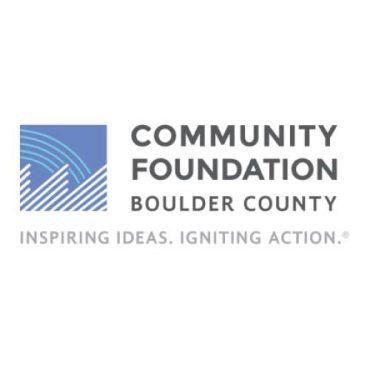2015 was designated by the United Nations as the year of soils. It was in recognition of the multiple roles of soils that often go unnoticed. One role is getting more and more attention though, that’s soils ability to store carbon, and as a result, mitigate the effects of climate change.
Elizabeth Black describes this as “the process of using plants and the soil microbes that are down in the soil around their roots, to take CO2 out of the atmosphere. The plant absorbs the CO2 and it uses sunlight to break the carbon off from the CO2 and then it uses the soil microbes down by its roots to sequester that carbon down in the soil in the form of humin which is black and soluble sequestered carbon. It’s what turns your soil dark.”
Black says humin is relatively stable which can last for centuries in the soil. As such, soil sequestration is being seen by a growing number of people as a way to significantly impact the effects of climate change.
Black says there are agricultural practices that can be done to maximize the potential of soil to store carbon “things like applying different compost: fungal rich compost or regular compost, putting manure on, adding biochar can sequester carbon. Cover crops, crop rotation and also no till farming and strip till farming – all those are ways we can sequester carbon on our agricultural lands.”
In addition to large scale agriculture, Black says gardeners can also make a difference through similar practices “you want to keep your soil covered as much as possible and you want to feed your soil microbes things that they will enjoy. Things like manure, compost, put a cover crop on in the fall so you don’t have bare soil on your vegetable garden over the winter time. Put a mulching blade on your lawnmower and leave the clippings in place because your soil microbes in your lawn can eat those grass clippings. Plant lots of things, don’t have a lot of bare soil around.”
-
 play_arrow
play_arrow
UN Year of Soils: Carbon in Soil to Mitigate Climate Change kgnu
Elizabeth Black will speak about soil sequestration of carbon at a forum presented by Plan Boulder County on Friday March 18th from noon to 1.30pm in the community room of Alfalfas in Boulder, she can be contacted at 303-449-7532 or [email protected].
Some links for more information:
- The Carbon Underground, an advocacy group for soil sequestration of carbon, has a good website with lots of video clips and links to research. This might be a good place to start. https://www.thecarbonunderground.org/
- Rattan Lal, Ohio State University professor has many video lectures on the web. He is the main numbers guy (How much carbon can those little microbes sequester anyway?) and is working on sequestration internationally too. A short video of him speaking: https://www.youtube.com/watch?v=mTb63CDJ5sA
- The Natural Resources Conservation Service of the UDSA has taken the federal lead on carbon sequestration in the agricultural sector. Although they promote their effort as “Soil Health” (http://www.nrcs.usda.gov/wps/portal/nrcs/main/soils/health/ ), they are also promoting the sequestration of carbon as “managing for soil carbon and organic material” (http://www.nrcs.usda.gov/wps/portal/nrcs/detailfull/soils/health/mgnt/?cid=stelprdb1237584). Perhaps they wisely understand that some of their target audience does not “believe” in Climate Change, and so have shifted their vocabulary.
- The NRCS also has videos and pdfs of individual farmers who are using different carbon sequestration/soil health techniques across the nation. Go tohttp://www.nrcs.usda.gov/wps/portal/nrcs/detail/co/soils/health/?cid=nrcseprd416103 for pdf’s of Colorado farmers. Go to https://www.youtube.com/watch?v=nWXCLVCJWTU&list=TLsE9MAyLxRnP6v5rPy4Brwu453ENSUDv8 for video interviews of farmers who are using soil sequestration techniques nationally.
- Gabe Brown has some very informative interviews about his farming practices in North Dakota to increase soil health. He has been able to wean his conventional farm off most synthetic fertilizers, pesticides and herbicides and increase his soil organic matter to 5-6% using these practices. http://brownsranch.us/category/videos/
- The Comet Farm Tool was developed by CSU to help farmers figure out changes that will help them sequester more carbon themselves voluntarily: http://cometfarm.nrel.colostate.edu/
- CSU has just published exciting new study results on a way to maximize carbon sequestration in agricultural soils: http://source.colostate.edu/csu-study-proposes-new-approach-to-retaining-soil-carbon/ for a video short on the study’s findings, and link to the complete results of this study and others. CSU is a leader in soil sciences and carbon sequestration.
- The Soil Will Save Us, by Kristin Ohlson is a highly readable account of various strategies and people who are working on soil sequestration of carbon.http://www.kristinohlson.com/books/soil-will-save-us
- The Marin Carbon Project is perhaps the best known group in California currently working on rangeland carbon sequestration: http://www.marincarbonproject.org/ Their website has descriptions of various projects they are running with numbers of tons of carbon saved and more.
- The Quivira Coalition, a Santa Fe based land stewardship organization promotes the “radical center” between ranchers, land managers and environmentalists and endorses carbon ranching, sequestering carbon through regenerative food production and progressive livestock management in New Mexico: http://quiviracoalition.org/Carbon_Ranch/index.html Their website contains links to many past and present projects they are running with local ranchers and livestock.
- The Rodale Institute, the longest running organic ag experimental station in the country researches organic carbon sequestration farming methods and compares them to conventional methods in decades-long field trials. http://rodaleinstitute.org/regenerative-organic-agriculture-and-climate-change/
- New Mexico State University molecular biologist David C Johnson has several PowerPoints on the web on studies he has done with fungal-rich no-turn compost and carbon sequestration: http://quiviracoalition.org/images/pdfs/3/6253-Johnson_Quivira.pdf . Unfortunately there is no sound and you have to spend some time figuring out his graphs yourself. After defining soil health history/basics/problems, he shows a simple way to make no-turn compost, and presents the results of 3 different experiments plus field trials using no-turn compost. He concludes by comparing costs/risks/benefits of soil sequestration of carbon using Ag practices with industrial techniques (carbon capture and storage or geo-sequestration) and outlines needed legislative fixes to benefit New Mexico.
- David Johnson describes his fungal-rich no-turn compost method suitable for a home gardener. http://www.authorstream.com/Presentation/davidcjohnson-413029-johnson-su-composting-bioreactor-easy-no-turn-compost-reactor-entertainment-ppt-powerpoint/ . This archived PowerPoint has the transcript describing his system in the copy below the images.
- Want to find out how much carbon is in your own soil, and what kinds of microbes you have? Ward Labs in Nebraska does soil testing for both things.https://producers.wardlab.com/default.aspx?ReturnUrl=%2f for information on their various tests (See Haney/Soil Health and PLFA/Microbial Community), how to take soil samples, and price lists.


















